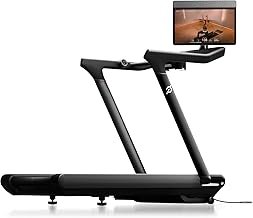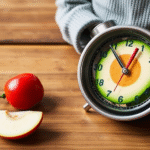High-Protein Meal Ideas for Sustainable Weight Loss
When it comes to weight loss, incorporating high-protein meals into your diet can be a game changer. High-protein meals help keep you feeling fuller for longer, which can reduce overall calorie intake. Let’s explore some delicious and sustainable meal ideas that you can easily prepare at home, helping you stay on track with your weight loss goals.
High-Protein Breakfast Options
Starting your day with a high-protein breakfast can set a positive tone for healthy eating throughout the day. Here are a few nourishing breakfast ideas:
- Greek Yogurt Parfait: Layer Greek yogurt with fresh fruits and a sprinkle of nuts or seeds. This meal is rich in protein and loaded with essential nutrients.
- Egg Muffins: Whisk eggs and pour them into muffin tins with diced vegetables and a bit of cheese. Bake until set for a grab-and-go breakfast that packs a protein punch.
- Overnight Oats with Protein Powder: Combine rolled oats, your favorite protein powder, almond milk, and toppings like berries. Let it sit overnight for a quick breakfast option.
Protein-Packed Lunch Ideas
Lunch is an opportunity to refuel your body and keep your energy levels up while maintaining a focus on weight loss. Consider these lunch ideas:
- Quinoa Salad with Chickpeas: Toss cooked quinoa with chickpeas, cherry tomatoes, cucumbers, and a light vinaigrette. Quinoa is a complete protein, making this meal satisfying.
- Tuna Salad Lettuce Wraps: Mix canned tuna with Greek yogurt, diced celery, and spices, then wrap it in large lettuce leaves for a low-carb, high-protein lunch.
- Grilled Chicken and Roasted Veggies: Top grilled chicken breast with your choice of roasted vegetables for a balanced meal rich in protein and fiber.
High-Protein Snacks
Snacking can be part of a healthy eating plan when you choose the right options. Here are some high-protein snacks to consider:
- Hard-Boiled Eggs: A classic snack that is easy to prepare in advance. Hard-boiled eggs are full of protein and healthy fats.
- Edamame: Steamed edamame is rich in protein and fiber. Sprinkle with sea salt for a delicious and nutritious snack.
- Cottage Cheese with Berries: Cottage cheese is an excellent source of protein, and pairing it with fresh berries adds flavor and antioxidants.
Dinner Ideas for Weight Loss
Dinner is often a time when larger meals are consumed, but it’s possible to enjoy a hearty dinner while focusing on protein. Try these high-protein dinner options:
- Turkey and Spinach Stuffed Peppers: Fill bell peppers with a mixture of ground turkey, spinach, and spices, then bake until tender. This meal is nutritious and visually appealing.
- Baked Salmon with Asparagus: Season salmon fillets with herbs and bake alongside asparagus. Salmon is rich in omega-3 fatty acids and protein.
- Chickpea and Spinach Stew: Combine chickpeas, spinach, tomatoes, and spices in a pot for a hearty, plant-based protein meal that fills you up without weighing you down.
Helpful Tips for Sustainable Weight Loss
When integrating high-protein meals into your weight loss journey, keep these tips in mind:
- Meal Prep: Designate time each week to prepare meals in advance, which can prevent unhealthy eating decisions during busy days.
- Portion Control: Serve protein-rich meals in appropriate portions to help manage calorie intake while still feeling satisfied.
- Stay Hydrated: Drinking water throughout the day can help curb hunger and support your body’s overall function.
Maintaining a high-protein diet does not have to be daunting. Experimenting with various recipes can make eating healthy fun and enjoyable. For more high-protein meal ideas and nutritious recipes, visit Eat Right or check out Bodybuilding.com for inspiration. You can successfully reach your weight loss goals by prioritizing nutritious, protein-rich foods!
The Role of Protein in Maintaining Muscle Mass During Weight Loss
When it comes to weight loss, many individuals focus on cutting calories and avoiding certain food groups. However, often overlooked is the critical role protein plays in maintaining muscle mass during this journey. Protein is not just for bodybuilders; it is essential for anyone looking to shed pounds healthily while preserving muscle tissue. Here, we explore how protein impacts muscle maintenance and offers practical meal ideas to ensure adequate intake.
Understanding Protein’s Role in Muscle Maintenance
Protein is made up of amino acids, which are the building blocks of muscle. When you lose weight, especially through calorie restriction, your body may utilize muscle as a source of energy if you don’t consume enough protein. Here are some notable points:
- Muscle Preservation: Adequate protein intake helps prevent muscle loss when you’re in a calorie deficit.
- Satiety: Protein takes longer to digest, keeping you fuller longer, which can help prevent overeating.
- Metabolism Boost: Higher protein intake can increase your metabolism, as your body uses more energy to digest protein compared to fats and carbohydrates.
- Hormonal Benefits: Protein helps regulate hormones that control hunger, like ghrelin and insulin.
Recommended Daily Protein Intake
While protein needs can vary based on factors like age, activity level, and overall goals, a general guideline for people aiming to maintain muscle during weight loss is to consume between 0.6 to 0.8 grams of protein per pound of body weight. For example:
| Body Weight (lbs) | Protein Intake (grams) |
|---|---|
| 150 | 90-120 |
| 200 | 120-160 |
| 250 | 150-200 |
These numbers can guide you in planning your meals effectively. Increasing protein-rich foods can support your weight loss journey while keeping muscular integrity intact.
High-Protein Meal Ideas for Everyday
High-protein meals does not have to be complicated. Here are some easy and delicious options:
- Breakfast: Scramble eggs with spinach and feta cheese. Pair with a side of Greek yogurt topped with berries for added protein.
- Lunch: Grilled chicken salad with mixed greens, cherry tomatoes, cucumbers, and a dressing made from olive oil and lemon juice.
- Dinner: Baked salmon fillet with a quinoa side dish and steamed broccoli. Salmon is rich in omega-3 fatty acids as well!
- Snacks: Choose high-protein snacks like cottage cheese, almonds, or protein shakes if you’re on-the-go.
Combining Protein with Other Nutrients
A well-rounded diet is important for optimal health and fitness. Make sure to pair protein with healthy fats and carbohydrates to provide your body with the energy it needs. For example, add avocado or nuts to your salads and opt for whole grains over refined ones. This ensures you receive a balance of macronutrients, which is key to not just weight loss, but overall wellness.
Hydration Matters Too
While focusing on protein intake, don’t forget hydration. Water supports your metabolic processes and can help manage hunger levels as well. Aim for at least 8 cups of water daily, and more if you engage in intense workouts.
The importance of protein in preserving muscle mass during weight loss cannot be overstated. By being proactive in your meal planning and integrating protein-rich options, you are setting yourself up for a successful weight loss journey without compromising muscle. For additional insights into protein and meal planning, visit the Choose My Plate website.
Balancing your meals may require some thought, but the benefits far outweigh the effort involved. By prioritizing protein, you can enjoy satisfying meals while promoting muscle health, aiding your weight loss journey.
Meal Prep Tips for Creating High-Protein Dishes
If you’re looking to boost your protein intake while enjoying delicious meals, meal prep is key. High-protein dishes can help in muscle recovery, keep you feeling full longer, and support sustainable weight loss. With a little planning, you can create nutritious meals that fit your busy lifestyle. Here are some effective tips to help you create high-protein dishes through meal prep.
1. Choose Protein-Rich Ingredients
Start with selecting ingredients that are naturally high in protein. Some great choices include:
- Chicken breast
- Turkey
- Fish (like salmon or tuna)
- Legumes (lentils, chickpeas, black beans)
- Greek yogurt
- Quinoa
- Eggs
- Tofu or tempeh
By incorporating these ingredients, your meals will have ample protein to keep you energized throughout the day.
2. Plan Your Meals
Planning is crucial for successful meal prep. Consider dedicating a couple of hours each week to outline what you’ll eat. Use a meal planner to decide on high-protein meals for breakfast, lunch, and dinner. This could look something like:
| Day | Breakfast | Lunch | Dinner |
|---|---|---|---|
| Monday | Greek yogurt with berries | Chicken salad with mixed greens | Grilled salmon with quinoa |
| Tuesday | Scrambled eggs with spinach | Tuna wrap | Lentil stew |
| Wednesday | Protein smoothie | Chickpea salad | Turkey stir-fry |
3. Batch Cooking
Batch cooking allows you to prepare multiple portions of your chosen meals at once. This method not only saves time but also costs by buying in bulk. Prepare large servings of proteins, whole grains, and vegetables on your designated cooking day. Divide the meals into individual containers for easy access throughout the week.
4. Store Properly
Proper storage helps extend the freshness of your meal prep. Use glass containers or BPA-free plastic boxes to store your meals. Label each container with the date and contents to keep things organized. Most high-protein meals can be stored in the fridge for up to 4 days or frozen for longer preservation.
5. Don’t Forget Snacks
High-protein snacks can keep your energy up between meals and curb cravings. Consider preparing the following snacks:
- Hard-boiled eggs
- Mixed nuts
- Protein bars
- Hummus with carrot sticks
- Cottage cheese with fruit
Having these readily available can prevent you from reaching for unhealthy options.
6. Experiment with Recipes
Don’t be afraid to get creative with high-protein recipes. Look online for inspiration and try new combinations of ingredients. Websites like Member or Food Network can provide ample recipes tailored to your high-protein meals. Changing up flavors and using various cooking techniques can keep your meal prep exciting.
7. Track Your Progress
Keeping a food journal or using an app to track your meals can be incredibly beneficial. Monitoring your protein intake will help you stay accountable and make necessary adjustments if you’re not meeting your goals. Aim for a variety of protein sources throughout the week to cover all essential amino acids and keep your meals interesting.
With these meal prep tips, you’ll be well on your way to creating high-protein dishes that support your health objectives while fitting seamlessly into your lifestyle. Remember, consistency is key. Happy prepping!
Easy High-Protein Snacks to Keep You Full
Finding easy high-protein snacks can be a game changer for anyone looking to maintain energy levels throughout the day. These snacks can help you feel full for longer, making it easier to resist unhealthy food choices. Here are some delicious ideas that will satisfy your cravings and keep you on track with your nutritional goals.
Greek Yogurt with Honey and Nuts
Greek yogurt is an excellent source of protein, packed with about 20 grams in one cup. Adding a drizzle of honey and a handful of mixed nuts will enhance the flavor and offer healthy fats as well. Here’s a quick breakdown:
| Ingredient | Serving Size | Protein (g) |
|---|---|---|
| Greek Yogurt | 1 cup | 20 |
| Mixed Nuts | 1 oz (about 28g) | 6 |
| Honey | 1 tbsp | 0 |
Total Protein: 26 grams
Hard-Boiled Eggs
Hard-boiled eggs are a classic snack that’s simple and nutritious. Each egg contains around 6 grams of protein, making them an easy way to add more protein to your diet. You can prepare several in advance and keep them in the fridge for a quick grab-and-go option.
Protein-Rich Smoothie
A smoothie can be an ideal snack when you’re in a rush. Blend a scoop of protein powder with 1 cup of almond milk, a banana, and a tablespoon of peanut butter. You’ll enjoy a creamy, delicious drink that could easily pack over 25 grams of protein.
Cottage Cheese with Pineapple
Cottage cheese is another fantastic high-protein snack. A 1-cup serving offers about 28 grams of protein. Pair it with fresh pineapple to add sweetness and balance out your snack. It’s light and refreshing, perfect for mid-afternoon cravings.
Beef Jerky
Beef jerky is a portable snack option that delivers an impressive protein punch, containing about 9-11 grams of protein per ounce. Opt for brands with low sugar content to keep it healthy. It’s a great option when you need a bite on the go.
Edamame
Edamame is a fun, unique snack that’s high in protein. Just 1 cup of cooked edamame contains about 17 grams of protein. Sprinkle a little sea salt or your favorite seasoning for added flavor. They are also rich in nutrients like fiber and iron.
Nut Butter Rice Cakes
Rice cakes are low in calories, making them an excellent base for toppings. Spread your choice of almond or peanut butter on a rice cake for a crunchy, fulfilling snack. One tablespoon of almond butter adds about 3 grams of protein, along with healthy fats and a hint of sweetness.
Quinoa Salad
Although usually thought of as a main dish, a small serving of quinoa salad makes a great high-protein snack. Cooked quinoa provides about 8 grams of protein per cup. Combine it with vegetables and a light vinaigrette for a tasty, nutritious option.
Chickpeas
Roasted chickpeas are crunchy and full of flavor, with about 6 grams of protein per ounce. Toss them with your favorite spices and bake for a delicious snack you can enjoy any time of the day.
Energy Bites
If you enjoy preparing snacks, consider making no-bake energy bites using oats, protein powder, honey, and nut butter. These bite-sized treats are highly customizable and can easily provide 4-6 grams of protein each, depending on the ingredients you use.
Any of these easy high-protein snacks into your daily routine can help you feel satisfied and energized throughout the day. Not only do they support muscle recovery and growth, but they also help with weight management by keeping hunger at bay. Try them out and find your favorites!
For more high-protein snack ideas, check out EatingWell or visit Bodybuilding.com.
Incorporating Plant-Based Proteins for a Balanced Diet
Plant-based proteins into your diet is a fantastic way to enhance your nutrition while promoting overall health. Plant proteins are not only beneficial for your body, but they also support sustainable practices that are good for the planet. Whether you are vegetarian, vegan, or just trying to eat less meat, adding these proteins helps you create balanced meals filled with essential nutrients.
Plant-based proteins come from a variety of sources. Here are some excellent options to consider:
- Legumes: Beans, lentils, and chickpeas are rich in protein and fiber, making them perfect for soups, salads, or side dishes.
- Nuts and Seeds: Almonds, walnuts, chia seeds, and sunflower seeds add protein and healthy fats to your meals. Try them as snacks or toppings.
- Whole Grains: Quinoa, brown rice, and farro not only provide carbohydrates but also contribute a good amount of protein. They are excellent bases for bowls.
- Tofu and Tempeh: Made from soybeans, tofu and tempeh can be grilled, stir-fried, or added to smoothies for a protein boost.
- Plant-Based Protein Powders: Options like pea protein, brown rice protein, and hemp protein can easily be added to smoothies or oatmeal for an extra dose of protein.
Combining different sources of plant protein can create complete proteins. For example, if you pair rice and beans, you’ll provide all the essential amino acids your body needs. This strategy makes it easier to meet your daily protein requirements without animal products.
Here are some delicious high-protein meal ideas using plant-based proteins:
| Recipe | Ingredients | Protein Content (per serving) |
|---|---|---|
| Lentil Soup | Lentils, carrots, celery, onions, vegetable broth | 18g |
| Chickpea Salad | Chickpeas, cucumber, bell pepper, olive oil, lemon juice | 15g |
| Quinoa Stir-Fry | Quinoa, mixed vegetables, soy sauce, tofu | 20g |
| Pea Protein Smoothie | Pea protein powder, banana, spinach, almond milk | 25g |
When incorporating plant-based proteins, make sure to focus on variety. Eating a mix of different proteins throughout the week not only keeps meals exciting but also ensures your body gets a broad spectrum of nutrients. Here are a few tips to help you include more plant-based proteins in your diet:
- Start your day with protein: Add some nut butter to your toast or include chia seeds in your breakfast smoothie.
- Snack smart: Choose nuts, seeds, or hummus and veggies instead of chips or candy.
- Experiment with new recipes: Look for plant-based recipes to diversify your meals. Websites like PETA offer great options.
- Plan your grocery list: Ensure you have plenty of plant proteins available. Consider shopping online at Thrive Market for organic options.
Transitioning to a more plant-based diet can feel overwhelming, but it doesn’t have to be. A gradual increase in plant proteins combined with your current diet can lead to lasting changes. You can aim to have at least one plant-based protein source in every meal. This practice not only meets your protein needs but also helps in weight management and overall health.
To enrich their proteins, some people also consider incorporating plant-based protein supplements. Products containing plant-based protein powders can provide additional support especially for those who lead active lifestyles or for those who are adjusting to a reduced meat diet.
Adding plant-based proteins into your meals brings numerous health benefits while supporting a sustainable planet. Embrace the delicious flavors and textures that plant proteins offer to transform your diet into one that is both nutritious and fulfilling.
Common Myths About High-Protein Diets and Weight Loss
When it comes to weight loss, high-protein diets are often surrounded by misconceptions. Understanding these myths can help you make informed decisions about your nutrition and weight loss strategies.
Myth 1: High-Protein Diets Are Only for Bodybuilders
Many believe that high-protein diets are exclusively for those aiming to build muscle, but this isn’t true. While protein is crucial for muscle repair and growth, it plays a vital role in weight loss as well. more protein in your meals can help you feel fuller for longer, reducing the chances of overeating.
Myth 2: Protein Will Make You Gain Weight
Some people fear that consuming higher amounts of protein will lead to weight gain. The reality is, protein can support weight loss when consumed as part of a balanced diet. It enhances satiety and raises your metabolic rate, which can contribute to burning more calories throughout the day.
Myth 3: All Protein Sources Are Equal
Not all protein sources are created equal. Some sources include saturated fats and can be unhealthy in large amounts. Focus on lean protein sources like:
- Chicken breast
- Fish (like salmon and tuna)
- Legumes (like lentils and chickpeas)
- Greek yogurt
- Quinoa
These options not only provide protein but also come with additional nutrients that aid in overall health.
Myth 4: You Need a Lot of Protein to See Results
Another common myth is the belief that excessively high protein intake is necessary for weight loss. While protein is essential, moderation is key. A daily intake of around 0.8 grams of protein per kilogram of body weight is sufficient for most people. An athlete, may require slightly more. Consulting a nutritionist can help tailor your protein needs according to your activity level.
Myth 5: High-Protein Diets Are Expensive
Many assume that a high-protein diet is costly, but it can be budget-friendly with the right choices. Consider these affordable protein-rich options:
- Eggs
- Canned tuna
- Peanut butter
- Tofu
- Beans
These items are not only economical but also versatile, allowing you to create a variety of meals.
Myth 6: High-Protein Diets Are Not Sustainable
People often think that high-protein diets are not sustainable in the long run. However, you can create a high-protein meal plan that includes a variety of foods, making it enjoyable and sustainable. Mixing different protein sources and incorporating fruits and vegetables ensures you maintain a balanced diet.
Myth 7: High-Protein Diets Can Harm Your Kidneys
There’s a common belief that high-protein diets can damage your kidneys, especially for healthy individuals. However, for those with healthy kidneys, moderate to high protein intake is safe. If you have existing kidney issues, it’s essential to consult with a healthcare provider before significantly increasing protein in your diet.
Myth 8: You Can Get Enough Protein from Just Meat
While meat is a great protein source, relying solely on it isn’t necessary or recommended. A diverse intake of protein, including plant-based sources, can provide ample amino acids and health benefits. nuts, seeds, dairy, and legumes can enhance your diet and support overall wellness.
Dispelling these myths is crucial for anyone considering a high-protein diet for weight loss. By focusing on quality protein sources and understanding the true benefits of protein in your meals, you can set yourself up for sustainable weight loss.
| Protein Source | Protein per 100g |
|---|---|
| Chicken Breast | 31g |
| Salmon | 25g |
| Lentils | 9g |
| Greek Yogurt | 10g |
For more insights and recipes related to high-protein diets, visit Eat Right and The Academy of Nutrition and Dietetics. Understanding these myths and incorporating the right protein sources will help you on your journey to healthy living and weight loss.
How to Choose the Right Protein Sources for Your Lifestyle
Choosing the right protein sources can make a significant difference in your overall health and well-being. As you embark on your journey to incorporate more protein into your diet, several factors should guide your selections. These factors include your dietary preferences, lifestyle, health goals, and budget.
The first step is to identify the type of protein that aligns with your lifestyle. Here are some common protein sources categorized for your convenience:
| Animal-Based Proteins | Plant-Based Proteins |
|---|---|
| Chicken breast | Quinoa |
| Turkey | Chickpeas |
| Fish (such as salmon) | Lentils |
| Eggs | Tofu |
| Dairy (like Greek yogurt) | Nuts and seeds |
For those who prefer animal-based proteins, options such as chicken breast, fish, and eggs offer high biological value, meaning they provide the essential amino acids your body needs for muscle repair and general function. If you are looking to build muscle or maintain a healthy weight, these sources are particularly effective.
On the other hand, if you lean towards a plant-based diet, you can explore a variety of protein-rich foods. Quinoa, lentils, and chickpeas are excellent choices that not only offer protein but also come packed with fiber, which can keep you feeling full longer. Keep in mind that plant-based proteins often need to be combined to ensure you’re getting all the essential amino acids.
When selecting your protein sources, consider the following factors:
- Dietary Restrictions: If you’re vegetarian or vegan, focus primarily on plant-based options. Nuts, legumes, and whole grains can be great for boosting your protein intake.
- Health Goals: If you’re trying to lose weight, lean protein sources like fish and chicken breast are ideal. They help keep you full without adding excessive calories.
- Convenience: Understand your lifestyle. If you are often on the go, ready-to-eat protein sources like Greek yogurt or protein shakes can help you meet your protein needs easily.
It’s also vital to think about the quality of the protein you choose. Look for sources that are minimally processed, rich in nutrients, and free of unnecessary additives. Quality protein sources support not just muscle health but your overall well-being.
Another crucial aspect to consider is sustainability. Understanding how your food choices impact the environment can help you make better decisions. For instance, fish sourced from sustainable fisheries or local farms generally have a lesser environmental impact. Organizations like the Marine Stewardship Council can guide you in this area.
Once you’ve identified the right protein sources, you can incorporate them into your daily meals. Here are a few meal ideas:
- Breakfast: Start your day with an omelet filled with vegetables and cheese or a bowl of Greek yogurt topped with nuts and berries.
- Lunch: Create a hearty salad with quinoa, chickpeas, and assorted vegetables, drizzled with olive oil.
- Dinner: Grilled salmon with a side of lentils. Pair it with steamed broccoli for a complete, nutrient-rich meal.
Portion sizes are essential, too. A good guideline is to aim for a palm-sized portion of protein at each meal. This measure helps in balancing all macronutrients appropriately.
Be aware of the trends and emerging research regarding protein consumption. Video tutorials and articles from Healthline and tip sheets from Eat Right can provide valuable updates about this topic.
The journey of choosing the right protein sources is both personal and flexible. Regularly assess how you feel after meals containing different protein types and adjust as necessary. By staying informed and thoughtful about your choices, you can find the protein sources that best support your lifestyle and health goals.
Key Takeaway:
In pursuing sustainable weight loss, incorporating high-protein meal ideas is not just a trend, but a strategic approach that supports your overall health. Protein plays a crucial role in maintaining muscle mass while you’re shedding pounds. When you lose weight, it’s vital to preserve as much lean muscle as possible. Including ample protein in your meals is key to achieving this, as it helps your body recover and build muscle, which in turn can enhance your metabolism.
When preparing high-protein dishes, meal prep is essential. Not only does it save you time during busy weekdays, but it also ensures you always have nutritious meals readily available. Planning your meals in advance allows you to be intentional about your ingredient choices, making it easier to pack in that protein. Simple dishes like grilled chicken with quinoa and steamed vegetables or chickpea salad can become staples in your weekly rotation.
Snacking smart can also aid in your weight loss journey. Opt for easy high-protein snacks such as Greek yogurt, nuts, or cottage cheese. These options keep you satiated between meals and help curb cravings that could derail your progress. Pairing your snacks with fruits or vegetables can further enhance their nutritional value.
Plant-based proteins offers a balanced diet and is a fantastic option for those looking to reduce their meat intake. Foods like lentils, tofu, and black beans provide excellent protein sources while contributing other essential nutrients, making your meals even more nutritious.
Addressing common myths about high-protein diets is equally important. Many worry that eating too much protein can lead to health issues, but when sourced from the right foods, it is both safe and beneficial. Understanding how to select the right protein sources for your lifestyle—whether plant-based or animal-based—can simplify meal planning and encourage healthier eating habits.
High-protein meal ideas, combined with strategic meal prep and snacking practices, can effectively support sustainable weight loss while ensuring you maintain the muscle mass crucial for a healthy metabolism. By educated choices and dispelling myths, you can enjoy the journey to better health with confidence and practicality.
Conclusion
Embracing a high-protein meal plan for sustainable weight loss can transform your approach to dieting and health. High-protein meals not only aid in shedding pounds but also play a crucial role in maintaining lean muscle mass. As your body burns fat, keeping your muscles intact is essential for overall strength and well-being. Focusing on efficient meal prep strategies makes it easy to create delicious, high-protein dishes that fit seamlessly into your busy lifestyle.
Snacking is another vital aspect to consider on your weight loss journey. Easy high-protein snacks can prevent cravings and keep you satisfied between meals. Whether you prefer yogurt, nuts, or protein bars, these options provide the nutrition you need while helping you stay on track. Plus, incorporating plant-based proteins ensures a diverse and balanced diet, ideal for those looking to reduce animal products.
It’s important to clarify the common myths surrounding high-protein diets. By addressing misconceptions, you empower yourself to make informed choices about your nutritional intake. Choosing the right protein sources that align with your lifestyle is key to developing a sustainable weight loss plan.
Ultimately, a well-rounded and protein-rich approach to eating can lead to lasting results. As you explore high-protein meal ideas, remember to prioritize what works best for your body and preferences. Your unique journey to weight loss is about more than just numbers; it’s about cultivating a healthy, enjoyable relationship with food that supports your goals long-term.










